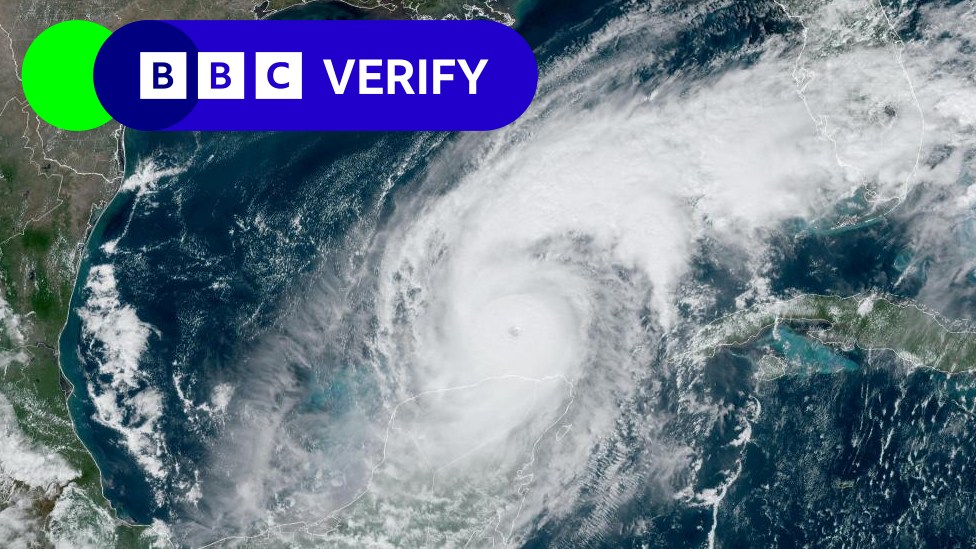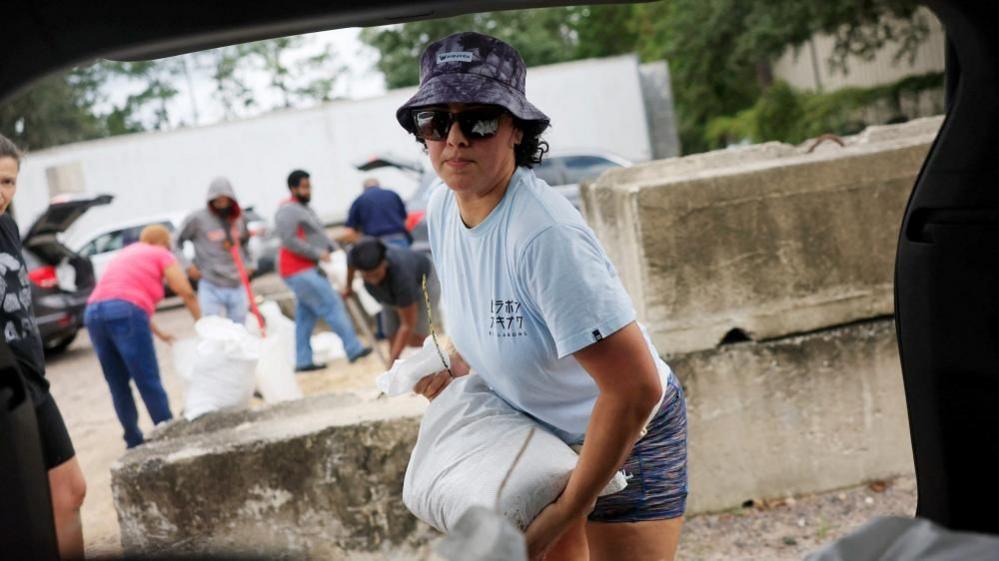Why did Hurricane Milton cause tornadoes in Florida?
Tornadoes touch down in Florida ahead of hurricane
- Published
Multiple tornadoes have been reported across Florida as Hurricane Milton lashed the state.
They were spotted in parts of south Florida, and crossing a key highway as drivers were on the road.
The National Oceanic and Atmospheric Administration (NOAA) said forecasted conditions were helping Milton produce the phenomenon across central and south Florida.
At least 116 tornado warnings were issued across Florida on Wednesday, Governor Ron DeSantis told a news conference that evening, with 19 twisters confirmed in the state.
Four people have been reported dead around Fort Pierce on the Atlantic coast, in an area where a dozen strong tornadoes were reported.
Forecasters say such twisters can form amid tropical weather, though typically are not very strong - through they still pose a deadly threat.
Why were there so many tornadoes ahead of Milton?
Tornadoes are perhaps not the first weather element we think about when forecasting hurricanes.
A huge area of cloud like a hurricane tends to make us think of copious amounts of rain, destructive winds and deadly storm surges.
But tornadoes can accompany any tropical weather, according to the National Weather Service (NWS).
And it is not unusual to receive reports of tornadoes in the outer rain bands of a hurricane, because there is enough energy for them to form.
The rain bands away from the eye of the storm are important areas because they host the best, most suitable wind shear and instability.
The NWS notes most of these twisters are "relatively weak and short-lived, but they still pose a significant threat".
Tornadoes can be tricky to forecast - and indiscriminate in where they form - but they can prove deadly when they strike in highly populated areas.
Tornadoes happen on a much smaller scale compared with a hurricane, but they can cause devastation when then make landfall in populated areas.
Just a fortnight ago, warnings were issued in Georgia for large tornadoes ahead of Hurricane Helene.
It is still uncertain how many tornadoes touched down in Florida this time.
How do tornadoes form?
How does a tornado form?
Tornadoes need particularly intense or unseasonable heat to develop. As the ground temperature increases, moist air heats and starts to rise.
When this moist, warm air meets dry, cold air above, a thunder cloud begins to build.
This cloud can develop quickly, bringing with it rain, thunder and lightning.
Winds blowing from different directions cause the air to rotate, after which a visible cone or funnel drops out of the cloud towards the ground.
Tornadoes can be hundreds of metres wide. They can last anywhere from several seconds to more than an hour, and can travel dozens of miles.
The Fujita scale is used to determine how powerful a tornado is. The highest on the scale - an F5 - is used to categorise tornadoes travelling at up to 318mph (511km/h).
These tornadoes can cause incredible damage, with the power to throw away vehicles and sweep away strong buildings.
Related topics
- Published10 October 2024

- Published8 October 2024

- Published9 October 2024
